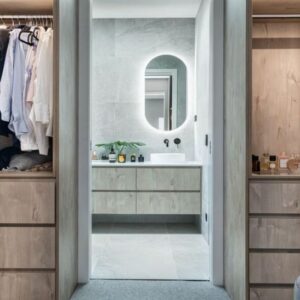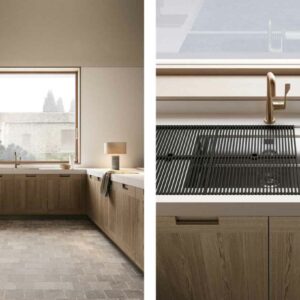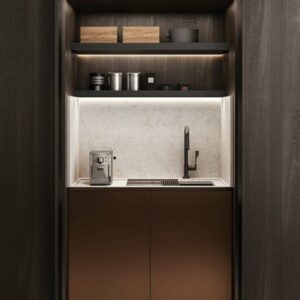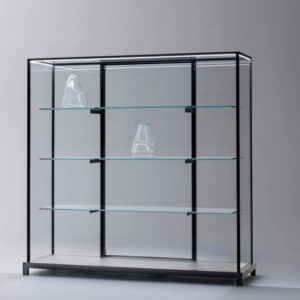Kitchen cabinets: how to choose the right furniture for the room where food is prepared (and eaten)?
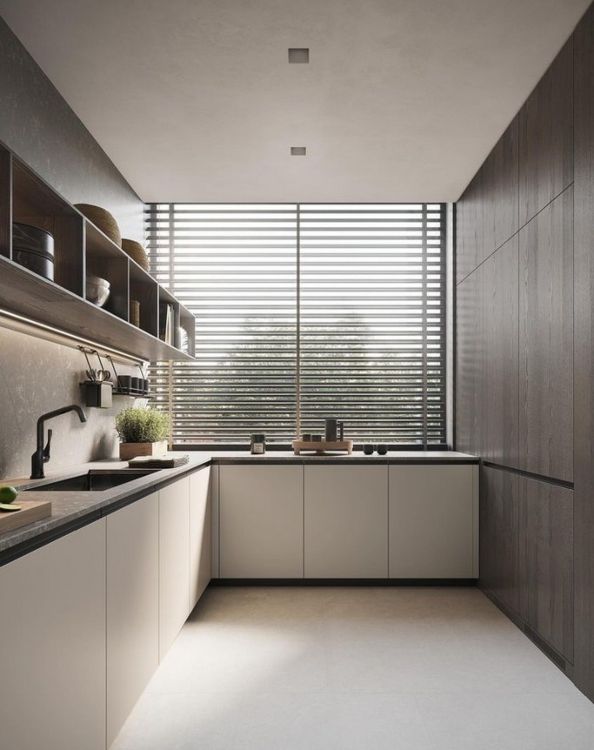
Choosing furniture for the kitchen always requires special attention. The style of the furniture and the arrangement you choose to give them are in fact aspects that have a very strong influence on the way the room looks and its functionality.
There are several factors to consider in order to make the right choice, and they all also depend on how the kitchen is used.
What are all the requirements that kitchen cabinets must meet?
When it comes to choosing kitchen cabinets, the starting point is always to assess your specific needs.
The first important consideration is to analyse the dimensions and layout of the room to be used as a kitchen. Taking precise measurements is absolutely essential to ensure that the furniture fits perfectly, without creating obstacles or being oversized in relation to the size of the space. In addition to considering space, it is essential to take into account any architectural limitations, such as the presence of windows, doors or columns, which are likely to influence the positioning of the furniture.
The choice of the number and arrangement of kitchen cabinets is also greatly influenced by the storage needs of the person living in the house. A single person who only cooks at home occasionally naturally has different needs than a family that prepares and eats three meals a day at home. Understanding how often you use the kitchen and what use you make of it allows you to understand how much space you need and how best to distribute the storage compartments.
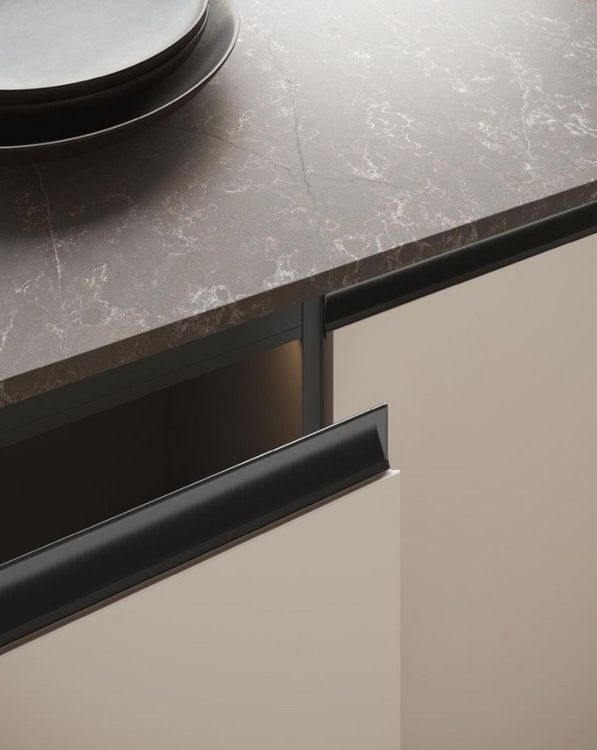
It is equally important to define from the outset how many and which appliances will be in the room. Depending on the aesthetic result you want to achieve, you can consider opting for built-in refrigerators and dishwashers or choose free-standing appliances, which will be left exposed.
What materials and styles should you choose for your kitchen cabinets?
Once you have clarified the practical requirements that the kitchen furniture should meet, you can move on to analysing the materials and styles available for the furniture. A great deal of attention really needs to be paid to the choice of cabinet materials, because their quality can make all the difference in terms of durability, maintenance and the overall aesthetic appearance of the kitchen.
One of the most commonly used materials for kitchen cabinets is solid wood. This material is particularly present in more traditional and luxurious kitchens and is especially popular because it offers a feeling of warmth and authenticity, for its durability and because it gives the kitchen a solid and elegant look.
A cheaper alternative to solid wood, mainly used in modern kitchens, is laminate. This material is less solid than wood, but still provides excellent resistance to stains and moisture. The fact that it is easy to clean and maintain means that it is preferred by those who prefer functional and inexpensive solutions.
In addition to materials, it is essential to take time to choose the style of kitchen furniture. Modern furniture can give the room a fresh style through the use of clean, essential lines. If, on the other hand, you opt for classic style furniture, the result will be a room with a more traditional and refined look. Valuable alternatives to these two styles at odds with each other are the rustic style, which with its warm colours and use of simple materials recalls the atmosphere of a country house, and the industrial style, which catches the eye thanks to the use of materials and accessories with a rough, recycled look.
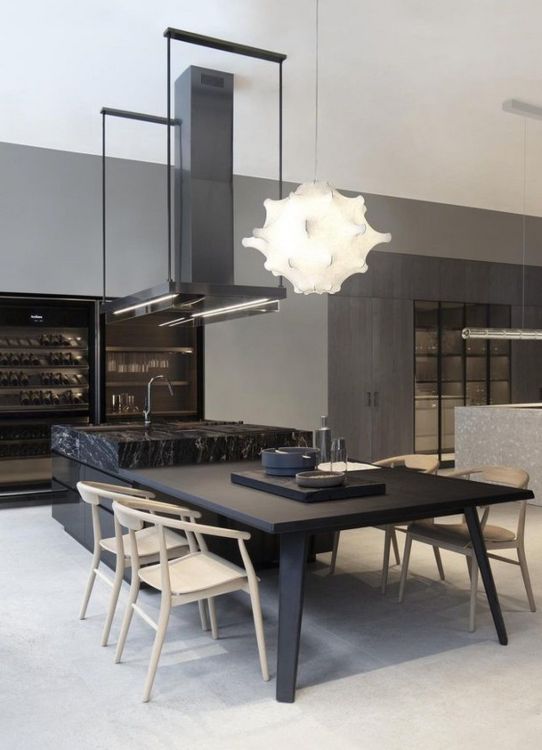
Kitchen cabinets and accessories: how to choose them case by case?
The aspects that most influence the functionality of kitchen furniture are its internal organisation and the accessories you choose to add to the room.
When furnishing the kitchen, it must be borne in mind that the arrangement and organisation of the various elements makes it easier to prepare meals and improves the efficiency of the space. If the room is large enough, you can consider installing a central island or peninsula, perhaps equipped with deep drawers or shelves in which to place pots and pans and accessories. The presence of wall cabinets, drawers and storage compartments is also important in order to be able to neatly arrange pantry items and all the utensils to be used.
The functionality of kitchen cabinets also depends on the closing and opening system adopted. For example, groove closures not only give the furniture an elegant and modern look, but are also practical to use and clean. Other systems to consider are soft-close hinges, thanks to which doors can be closed quietly, and push-to-open opening, which is perfect for emphasising the minimalist design of any kitchen furniture.
Which different styles of Kitchen cabinets can you choose from?
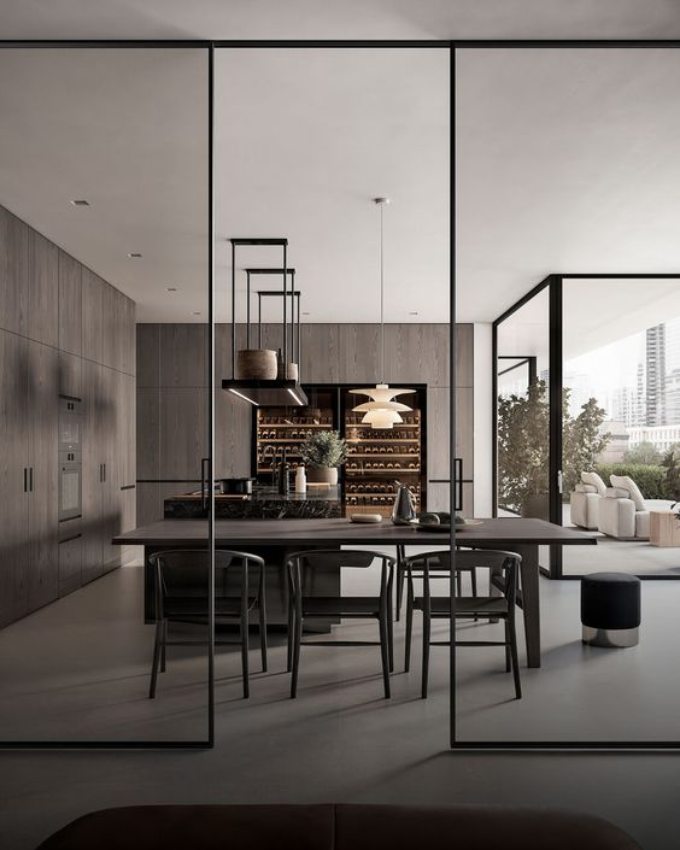
In the preceding paragraphs, we have mentioned the different styles of Kitchen cabinets. However, the subject is too important to be exhausted in a handful of lines. We take it up again here, to give it the space it deserves.
The first observation to be made is that there are indeed many different styles of Kitchen cabinets. Each of them has distinctive characteristics, reflecting different design trends. So, what are these styles? Here is a list of the main ones:
- Classic furniture
They are characterised by having clean lines, elegant details and neutral colours. The most commonly used material for their construction is solid wood.
- Modern-style Kitchen cabinets
Clean lines, smooth surfaces and a minimalist design are emphasised here. The most commonly used materials? Generally, metal, glass and laminate of the finest type, which are often accompanied by bold or, conversely, neutral colours.
- Rustic furniture
Rustic-style Kitchen cabinets is mostly made of untreated or recycled wood. Characterised by a more homely and traditional look, they may include details such as wrought metal handles or aged finishes.
- Industrial-style furniture
They are generally created from unfinished materials. Their surfaces can be robust and the finishes are often inspired by old industrial buildings.
- Scandinavian-style furniture
Derived from Nordic design, this style envisages light colours and woods and clean lines for Kitchen furniture. The appearance is often simple and aims at functionality.
- Colonial-style Kitchen cabinets
Here, there is a clear reference to the furniture typical of colonial houses. The creations are mostly made of dark wood and with classically inspired decorative details.
- Shabby chic furniture
This is a style reminiscent of vintage and feminine taste. It is characterised by white-painted furniture and worn details and finishes for a lived-in look.
- Bohemian-style Kitchen cabinets
And here we come to the one that represents a more eclectic and more informal look, and which makes bright colours and mixed materials its own. It can create truly unique pieces of furniture.
- Minimalist Furniture
This last style focuses on the essential, with clean lines, neutral colours and a minimum of ornamentation. Everything is focused on the essential.
What is your favourite style of Kitchen cabinets? However, did you know that you might not even have one? That’s right, because all these styles can also be combined with each other or adapted as required to create a completely customised look that fully reflects your personal taste and project needs.
Do you need to realise an interior design project?
Do you need to furnish your home or an individual room?
Choose a top-class joinery.
CONTACT US!
Another requirement for Kitchen cabinets: practicality!
Beauty is important. So is elegance. So is style. But we must not forget that practicality is also a requirement for Kitchen cabinets. Indeed, a well-designed kitchen facilitates the daily tasks involved in preparing food and cleaning the space in which it is eaten.
What advice can we give in this regard? First, the organisation of space must be considered: cupboards and drawers must be designed to maximise storage volumes and to make it easy to find utensils and ingredients for cooking food. Next, comes ease of access to Kitchen furniture: the most frequently used items should be placed within easy reach so that they are easily accessible when preparing dishes. For example, pots and pans can be placed close to the cooking area.
This is not the end of the story. When talking about the practicality of Kitchen cabinets, one cannot forget that its materials must be easy to clean and must, as far as possible, resist stains. Smooth, non-porous surfaces, such as stainless steel, are among the most practical.
Practical is also an efficient waste disposal system. But also lighting that allows the kitchen to be well illuminated, which facilitates the preparation and presentation of food on the table. In this respect, under-cabinet lights can be particularly useful to illuminate the work surfaces of all Kitchen furniture.
Are there any other useful tips worth considering? Certainly. For example, one option that should not be overlooked is integrated appliances. What does that mean? If possible, choose appliances that integrate perfectly with the furniture to create a uniform, clean look. This is very important, in the same way that easy maintenance of Kitchen is important. On the other hand, durable and high-quality materials require less maintenance in the long run.
In conclusion, what can we say about the practicality of furniture in a kitchen? It’s quickly said: practical Kitchen furniture is a requirement often taken for granted, both by designers and end customers. However, this is not the case. Your task is therefore to make a careful selection and, where you do not have the skills or have doubts, you must rely on an interior designer specialised in customised kitchen design.
Choose a top-notch woodworking shop.
We have over 50 years of experience!
Contact us!
Il Piccolo, a second generation family business, opens its showroom in Lugano. With over 50 years of experience, Il Piccolo brings with it a wealth of technical and design knowledge of the highest level, thanks to the many interiors designed and furnished around the world. In addition, Il Piccolo represents many of the best international luxury furniture brands. We design, manufacture and sell the best in design. Also with regard to La Cornue kitchens, we follow the customer from the design to the realisation of the project, integrating the whole process with a precise and professional service.CONTACT US
